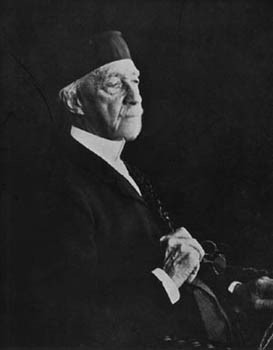Martin Johnson Heade
Painter

1819 - 1904
Inducted in 1995
Biography
A major figure in late 19th Century American art, Martin Johnson Heade spent the last 21 years of his life as a resident of St. Augustine. Some of his most important works were created there, brilliant floral paintings of coastal environs, flowers and wildlife that ultimately became his signature expression.
A native of the small hamlet of Lumberville in Bucks County Pennsylvania, Heade is believed by art historians to have received his first art training from the folk artist Edward Hicks, who lived in the area. Heade soon did what most talented and ambitious young people do from small towns–escape to pursue their dreams. He traveled to Europe and spent two years painting in Rome.
At the age of 22, he exhibited his first work at the Pennsylvania Academy of the Fine Arts in Philadelphia in 1841. He exhibited frequently after that and, after another trip to Europe, finally settled in New York in 1859 where he indulged a new passion–landscape painting. In 1857, he had become friends with some noted landscape artists of the day who drew their inspiration from the White Mountains of New Hampshire, as well as the prevailing romanticism of the time.
This group eventually would be described as the pioneers of what became recognized in the art world as the Hudson River School, a reference to the group's singular devotion to painting landscapes found in the Hudson River valley. Heade became close friends with one of the school's most prominent members, Frederic Edwin Church, a landscape artist extraordinaire. Church's work substantially influenced the course of Heade's career.
One of Church's paintings, Heart of the Andes (1859) lured Heade to South America in 1863. He spent almost two years, mostly in Brazil, creating a lengthy series of small paintings of hummingbirds. Heade subsequently visited Nicaragua, and in 1870, Colombia and Jamaica, where he continued his interest in painting the birds and lush foliage of the tropics.
After moving to St. Augustine in 1883, Heade returned to painting landscapes, capturing the beauty and serenity of the area's subtropical marshland. He also painted many still lifes, predominantly of local flowers.
Heade died in 1904 without knowing fame. But his work was rediscovered in the 1940s, and art scholars soon realized Heade's significance in American art. Today, he's considered one of the most important artists of his generation. His paintings are part of the permanent collections of most of the nation's major art museums, including the Metropolitan Museum of Art in New York City and the National Gallery of Art in Washington, D.C.
Art scholars still debate whether Heade's work can be fairly placed in the canon of Hudson River School art, since most of his landscapes depicted marshlands, instead of mountains, and the way he used perspective distinguished his style as well. In 2004, the U.S. Postal Service paid tribute to Heade with the release of a stamp featuring one of his paintings.

